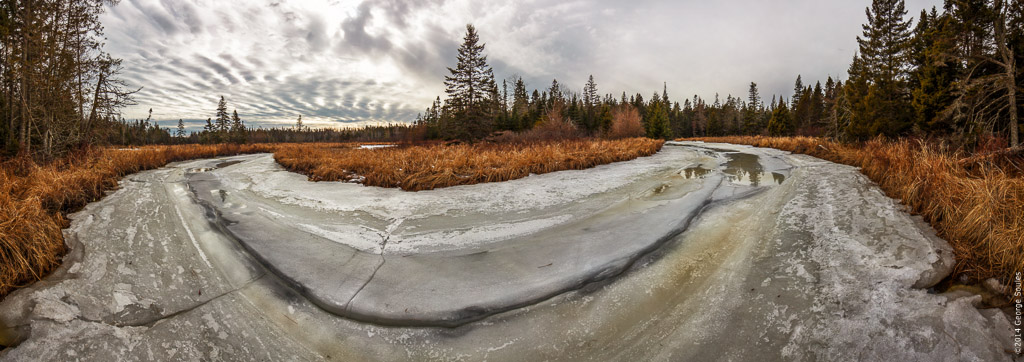Bass Harbor Marsh, Acadia National Park
Bass Harbor Marsh originates in Southwest Harbor in the area where Marshall Brook and Lurvey Brook come together. This combination of south flowing freshwater quickly forms into a large meandering stream with the classic S curves that naturally develop when a river or stream travels across nearly flat terrain. The flow continues to widen, is joined and fed by Buttermilk Brook, and eventually becomes a saltwater marsh connected with the Atlantic Ocean at Bass Harbor. You can see a satellite view here.
All last fall Janice and I wanted to kayak on the marsh, but never had a chance to go when the tide was just right. The depth of the water depends on the tide and venturing into the marsh at the wrong time can get you mired in the kind of mud that will suck a shoe right off of your foot. We'll attempt a trip again this spring, but today we discovered that we could walk from our house to the northern end of the marsh via the Marshall Brook fire road which is off the Seal Cove Road in Southwest Harbor. The entire fire road is within Acadia National Park and is about a mile and a quarter long. Because it was covered with frozen snow on top of ice, we wore trail crampons for safety.
We knew we were at the end of the road when we got to the edge of the stream and saw the frozen water. At that point the distance from one bank across to the other was maybe 50 feet. The mackerel sky and strange mixture of ice colors and textures, combined to create a scene that I can only describe as surreal. And it was so quiet, almost eerie. We walked south on the stream, along the edges, for about two tenths of a mile, stopping to take pictures along the way. The three smaller photos below are each single images taken with a 17mm lens which is pretty wide, but the top image is a three-shot panorama that captures nearly 180° of the first big S curve we encountered. I don't know if you can get this far in a kayak or canoe from the Bass Harbor end of the marsh, but we plan to find out as soon as the weather turns warm again.

Click an image above to see a larger picture
